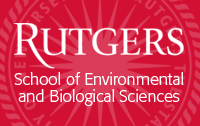Main Content
General Air Pollution Courses
The Rutgers Air Pollution Training Program (RAPTP) has been offering air pollution training since 1950. RAPTP has offered many different air pollution training courses. Should your organization have an interest in specific courses or in discussing a custom course, please contact us so we can discuss your needs.
The Rutgers University Air Pollution Training Program (formerly an EPA-APTI, Area Training Center no longer receives funding from the USEPA Air Pollution Training Institute as that federal program is no longer in existence. Federal training funds are now directed to regional consortia (MARAMA, NESCAUM, WESTAR, CENSERA, etc.). Each consortium, in consultation with their member-states, decides which courses to offer and provides funding for those courses through a variety of providers. The Rutgers Air Pollution Training Program is one of those providers. Please check with your agency’s training coordinator, the training coordinator for your regional consortium, or contact us for more information. The Rutgers Air Pollution Training Program (RAPTP) continues to offer high quality air pollution training to state, local, and private-sector air quality professionals.
EPA-based (APTI) Course List
APTI 450: Source Sampling for Pollutants
Description: This four-day course will explain and provide hands-on experience with the methods used to sample particulate matter from stationary emission sources. The course will present the principles and techniques associated with isokinetic source sampling procedures for particulate matter given in EPA regulations. Methods covered will include Methods 1 through 5 and Methods 201, 201a and 202.
The lectures will cover basic concepts associated with gas volumetric flow and isokinetic sampling as well as details of actual sampling procedures. Problem solving in the performance of EPA source test reference methods 1, 2, 3, 4, and 5 as well as Methods 201, 201a and 202 will be emphasized. Sample recovery issues and the “sulfate measurement artifact” will be discussed. The course will cover the stack test observer check list.
Laboratory exercises are designed to familiarize students with the proper use and calibration of source sampling equipment. Students will perform a “mock” source test using actual stack testing equipment. Example data will be provided to students who will make all final test calculations, and report results. Students will participate in a sampling train “mock inspection” and receive hands-on training.
Topics will include:
- Basic Principles of Gas Behavior
- Principles of Isokinetic Sampling
- Description of Source Sampling Equipment
- Explanation of EPA Methods 1-5 Source Sampling Calculations
- Gas Velocity and Flow Rate Calculations
- The Method 5 Test
- Methods 201 and 201a and 202
- Cyclonic Flow Evaluation
- The Role of the Agency Observer, including checklists for the observer
- What to look for when reviewing a test protocol, observing a test, or reviewing results
- Mistakes commonly made during testing
- Errors that can negate the use of the test results
- Example calculations and how to check calculations submitted by the stack sampling team
- Quality control steps & Quality assurance parameters
- Quantifying fine particle emissions
- Detection limits and sampling times
- Where to find information, guidelines, and requirements
- EPA’s Air Emissions Measurement Center website (https://www.epa.gov/emc)
- Sample recovery observations, procedural inspections, calculations, report writing, and QA techniques
Target Audience: Students will be employees of state and local air pollution control agencies. Private-sector personnel are also encouraged to attend. Students are expected to have an engineering or science background. The course will prepare the student to perform and/or evaluate results from a particulate matter source test in order to assess compliance with local, state, and federal requirements. Students should have a college-level education in engineering or the sciences and should be capable of manipulating simple algebraic expressions and performing mathematical computations.
APTI 452: Principles and Practice of Air Pollution Control
Registration: Click here to register!
Course Time: 9:00 am – 4:30 pm
Location: Rutgers New Brunswick (Bioresource Engineering Laboratory)
Description: This introductory 3-day course is an overview of the entire federal/state air pollution program including discussion effects and sources of air pollutants and the technology, engineering controls and management systems developed to minimize emissions.
Topics will include:
- History of Air Pollution Control
- Effects of Air Pollutants
- Transport and Dispersion of Air Pollutions
- Air Quality Management
- Laws and Regulations
- Air Sampling and Analysis
- Source Sampling and Analysis
- Control Strategy Development
- Emission Inventories
- Pollution Prevention
- Mobile Source Controls
- Control Technology Review for Particulate Matter and Gaseous Constituents
- Compliance Monitoring and Enforcement
Target Audience: This is a valuable introductory course for those responsible for air compliance inspecting and sampling and persons in environmental program management and legal positions who are responsible for meeting the requirements of the Clean Air Act. In that the course covers all aspects of the federal/state air pollution program, individuals will gain an understanding of how their duties and responsibilities support the other aspects of the greater air pollution program.
Rutgers Air Pollution Training Program (RAPTP)
School of Environmental and Biological Sciences
Rutgers, The State University of New Jersey
14 College Farm Rd., New Brunswick, NJ 08901-8551
Environmental & Natural Resource Sciences Bldg (ENRS) | (848) 932-5784
Questions? Contact Pamela Springard-Mayer at pspring@rutgers.edu
